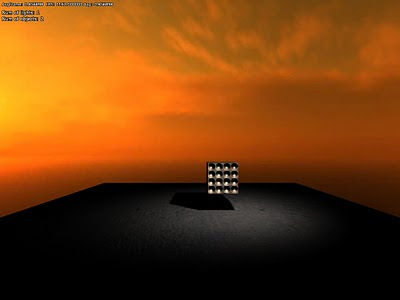Tech Feature: Pre-Pass Lighting

Forward Rendering
The engine powering Penumbra (HPL1) uses something called forward rendering. This type of rendering works by rendering the entire scene on an object basis. So when rendering a chair, wall, or any geometry in the world, this was done by drawing it one time for every light that touches it. So an object that is lit by three lights has to be drawn three times, and so on. This technique can be quite limiting when setting up scenes as you need to be very careful when adding lights. It might not actually be clear exactly how much impact on performance a single light will have and levels usually require quite some tweaking to get right. The complexity of a scene can be expressed as:
Draw calls = Objects * Lights
This means that the number of draw calls can easily get very large and only adding a single light, even if it has little effect on the scene visually, can have very negative effects on performance.
Deferred Shading
When starting work on HPL2 (which was used for Amnesia) I wanted to get away from this annoying light limitations. Since HPL1 had been created a new technique called "Deferred shading" had emerged and when work on HPl2 was started, the average PC system was up for the the task.
What makes deferred shading special is that it separates rendering objects and rendering the lighting. This works by first rendering to a special G-buffer that contains information such as normals, depth and color of all on screen objects. The simpulan output looks like this:
here) during the development of Amnesia and was a bit interested in trying it out. I was interested in the tech back then since it made light rendering go faster, something that had proved a bit of a bottle neck in Amnesia. However, I did not have time back then and decided against it.
As I started to update the engine to HPL3 I again looked at this technology. This time more had been written on the subject and it had actually been tested. For example a similar algorithm was used in Insomniac's Reistance 2 and Crytech goes over it in a paper about CryEngine 2. This also meant that the method was practical, and was well worth trying (I usually try and use tech I have been able to try in other games, as tech dead-ends can prove quite expensive).
Pre-pass lighting (or deferred lighting as it is called sometimes) is very similar to deferred shading and I could use much of the code from HPl2 when implementing it. Only a few changes in materials and light rendering was really needed. The rendering works by also first rendering to a G-buffer, but one only containing normal, depth and specular power. After that lights are rendered, but they render only part of the light equation; basically color and specular intensity. Then in a simpulan pass all objects are rendered again and the light data from the previous pass is used to render the simpulan image. The sequence is like this:
Render Normals+Depth -> Render Lights -> Render simpulan image
The first good thing is that this technique is able to render lights faster, since each lights has to do less equations and access less textures. The algorithm also includes an extra step at the end, but this does not matter that much, as the added the simpulan render takes is regained by the one less buffer needed to be rendered to in the first g-buffer pass (only 2 textures needed instead of the 3 deferred shading uses).
This speed up was not the main reason why I used it though. Since each object rendered again during the simpulan pass, it is possible to have a much larger variety of material types. Instead of being confined to using what can be fitted into a g-buffer, a material can do specific calculations the simpulan image pass. This allows for specialized skin shaders and other tricks. For example, it is now possible to have more features packed into the decal materials:



